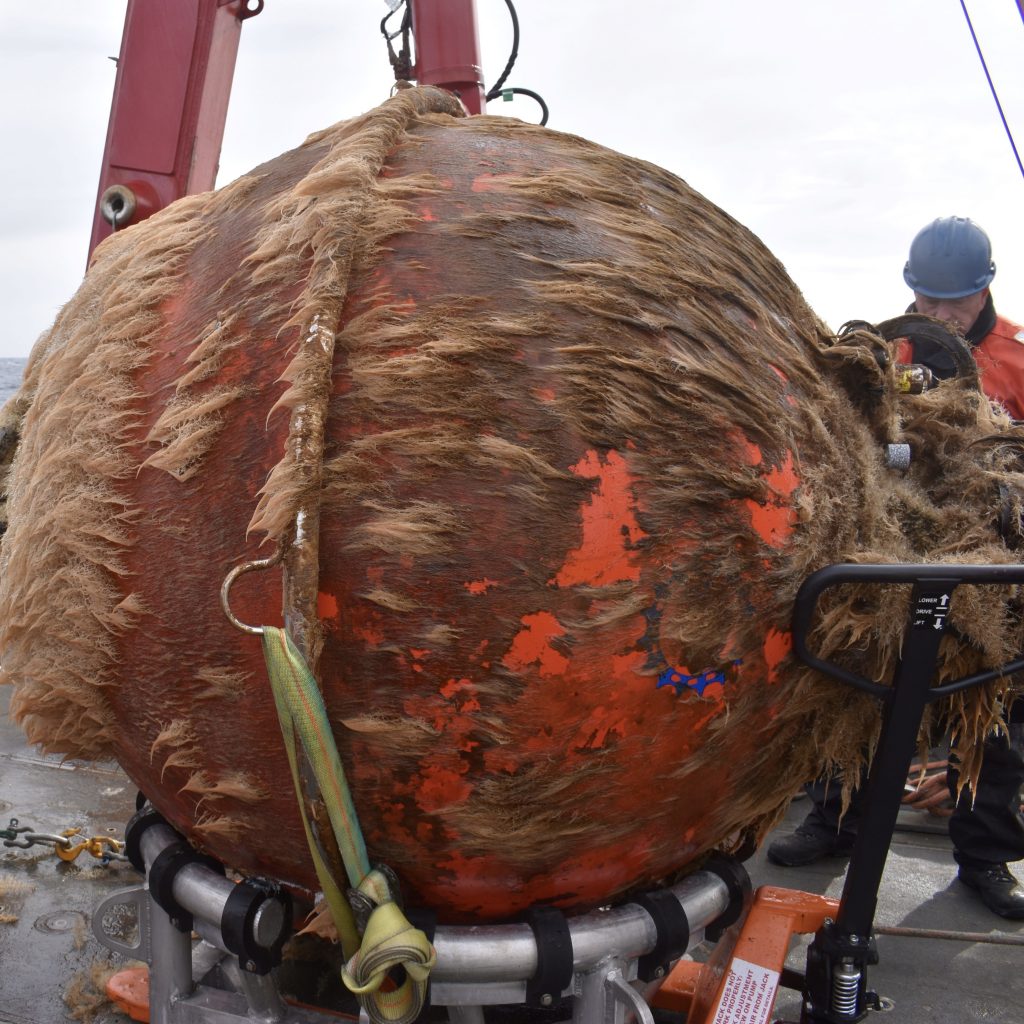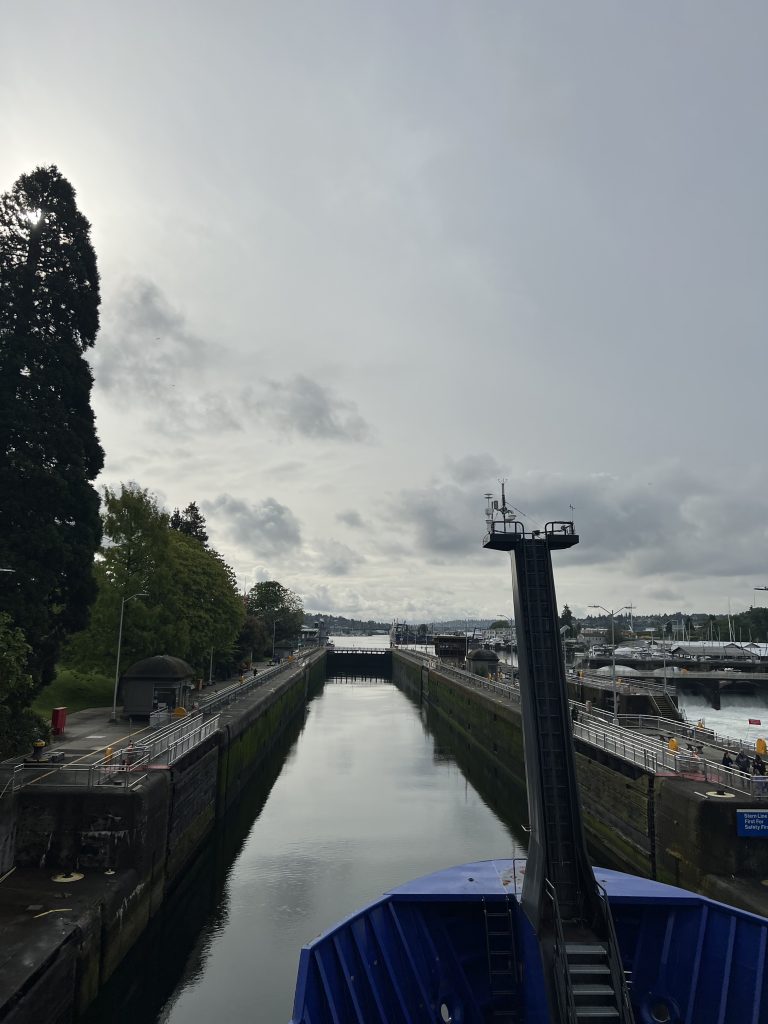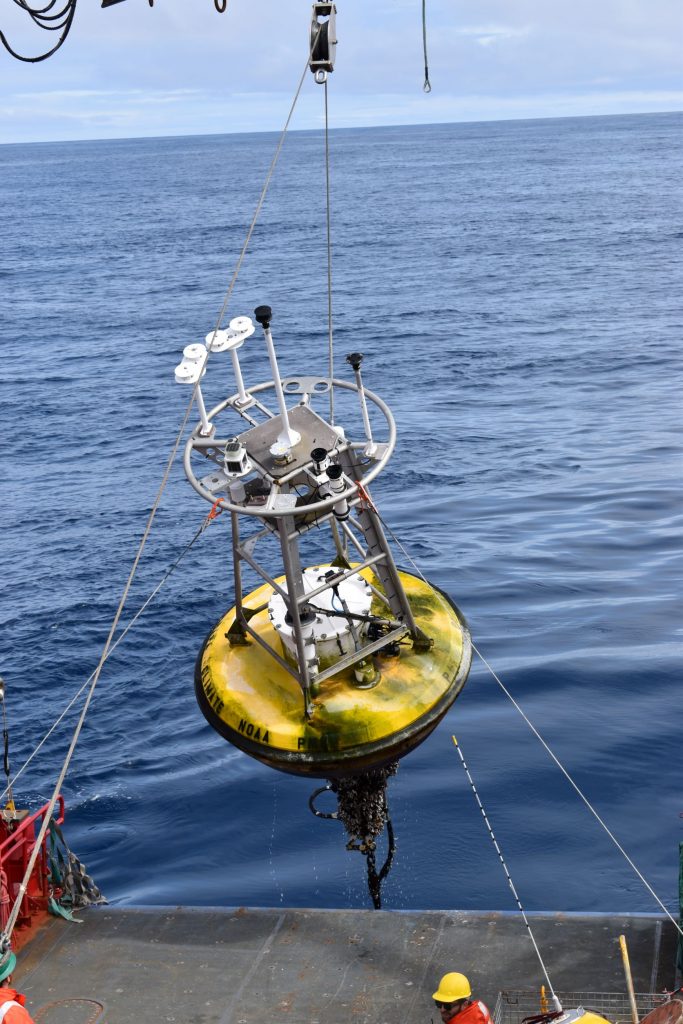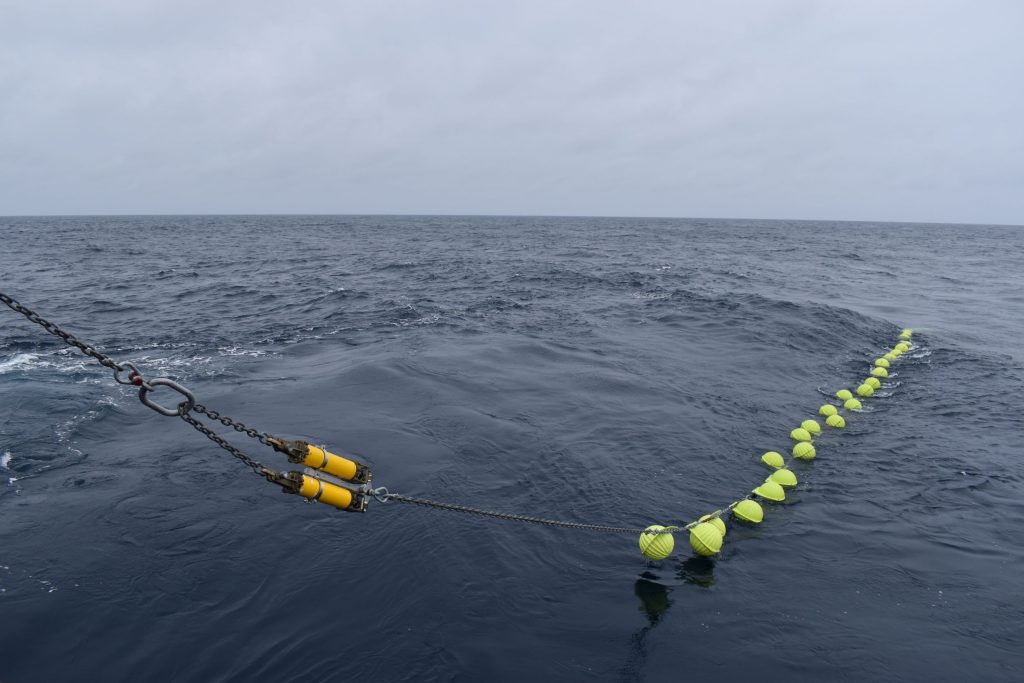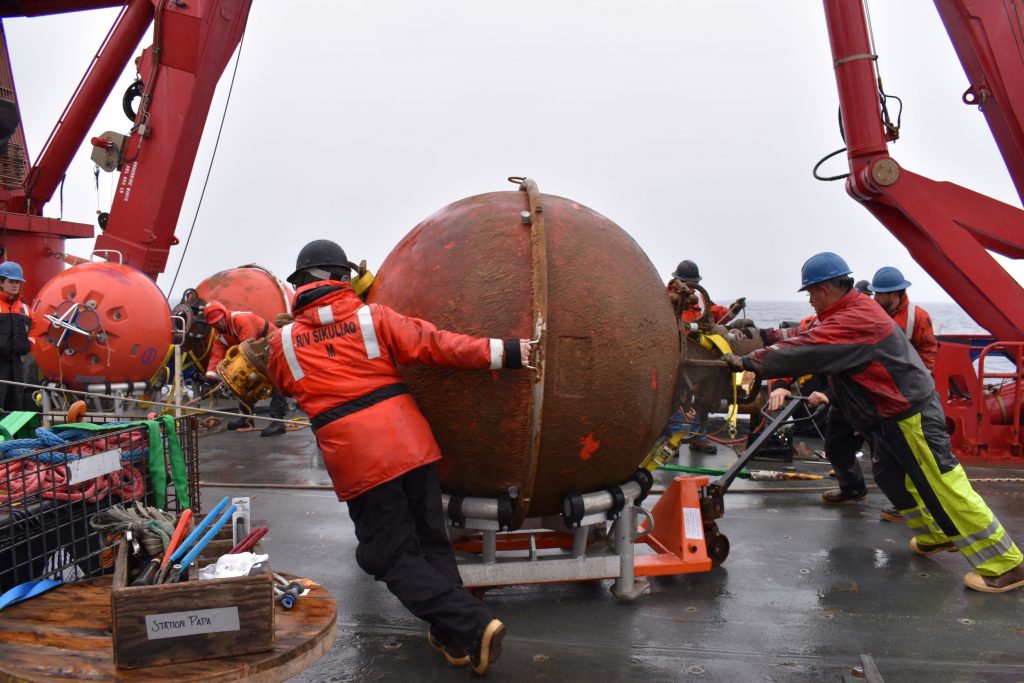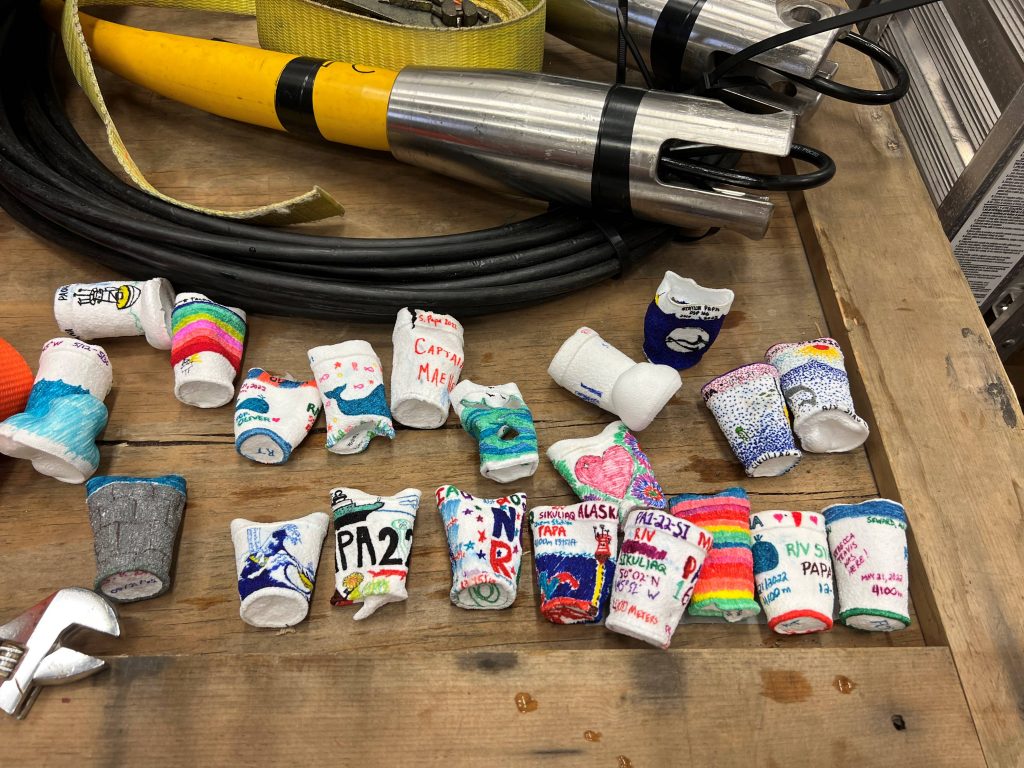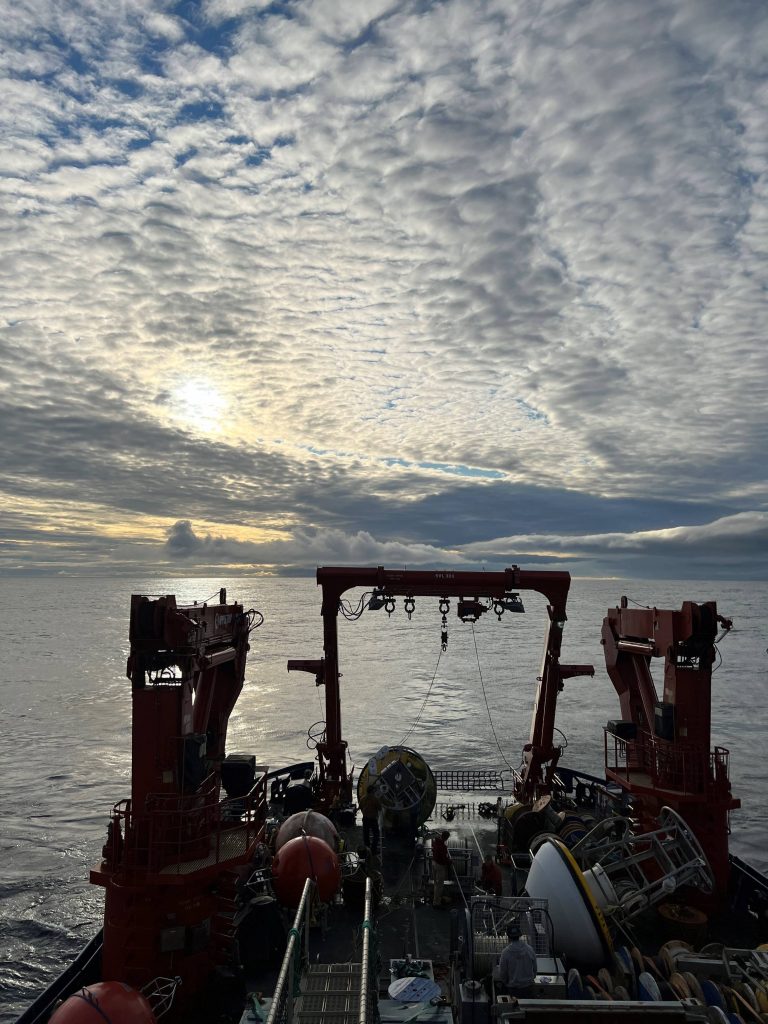Posts Tagged ‘Station Papa’
A Year at Sea
What one year in the ocean looks like…. A flanking mooring 64” sphere before (nice and shiny), and after (with 12 months of marine growth). Marine growth can inhibit the operation of the mooring and instruments and is one of the reasons we need to recover and refurbish the OOI infrastructure on a regular basis.
Read MoreLanded in Seattle
And they are back! After 19 days, and successful completion of six mooring deployment/recoveries, the Station Papa 9 team aboard the R/V Sikuliaq arrived in Seattle today. Once through the canal and in port, the team unloaded and began the journey home. Well done, team.
Read MoreMore curious visitors
We may be interested in the ocean, but sometimes the ocean is interested in us! The Station Papa 9 cruise had some inquisitive visitors this year including these sperm whales and seals.
Read MoreBiofouled buoy
NOAA was also onboard the R/V Sikuliaq to turn their surface mooring. OOI is always happy to collaborate with other scientists and institutions! After a year in the water, this mooring was host to some marine life as it was brought on board.
Read MoreComponents are key
The subsurface moorings at Station Papa have various components that are all important for the collection of scientific data. The orange spheres provide buoyancy to keep the mooring vertical and instruments at the desired depth. The controller cage manages the sampling rate and data collection from the oceanographic instruments on the mooring. The profiler…
Read MoreMooring recovery
Recovery of the old moorings is extremely important to the OOI program. Even though OOI telemeters data in near real-time, there can be gaps. When the moorings are recovered, OOI team members also recover all the raw data at its highest resolution. These data are also uploaded to the OOI site and made available to…
Read MoreBefore and After
Station Papa 9 team members spent some time during transit decorating Styrofoam cups, which were later placed in a CTD rosette. The CTD Rosette, depending on the sampling plan, may sample to several hundred or even thousands of meters below the surface. The after picture shows what pressure does to Styrofoam, an example of…
Read MoreCloud Cover
The clouds rolled in as the sun set as the R/V Sikuliauq headed Headed to re-deploy the NOAA PMEL surface mooring.
Read More
